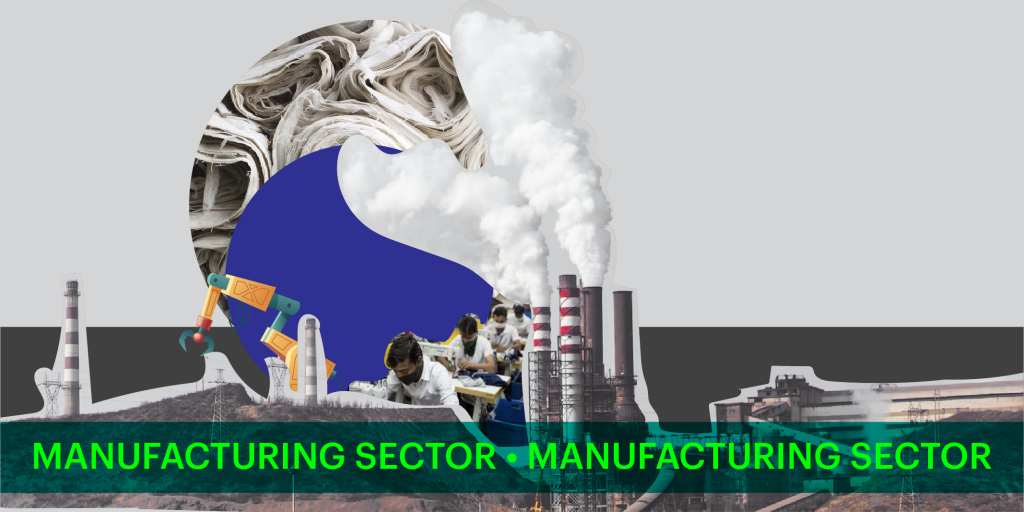Last Updated on Mar 24, 2021 by Manonmayi
The coronavirus-led lockdown hasn’t been kind to the Indian manufacturing sector. The sector, which contributes ~20% to our GDP, was suffering long before COVID-19, just like the Indian real estate sector. But the pandemic only escalated its long-standing woes. So, how would the manufacturing sector fare after COVID? Let us analyse in this article.
The article covers
The manufacturing sector in pre-COVID times
Challenges of the manufacturing sector during the lockdown
The overall impact of COVID-19 on the Indian manufacturing sector
Prospects of the manufacturing sector post COVID-19
How can the manufacturing sector thrive in the post-COVID era?
Table of Contents
The manufacturing sector in pre-COVID times
As mentioned, the manufacturing sector was already reeling before COVID-19. The fact that the auto sector accounts for 50% of the manufacturing sector’s contribution to the GDP paints a clearer picture. Mainly because, the auto sector had reported a 15% drop in sales and over 10% fall in production even before the pandemic. The issues mainly attributed to the economic slowdown, low demand, and the disruption in international supply chains caused by the lockdown in China.
Challenges of the manufacturing sector during the lockdown
The Purchasing Managers’ Index (PMI), which is an important indicator of the current and future business conditions in the manufacturing sector, is proof. The index fell from 51.8 in Mar to 27.4 in Apr, lowest in over 15 years. For more context, an index reading of over 50 signifies expansion; anything lower means a contraction in the manufacturing sector.
On looking closely, you will find out why. First, an exodus of labour flocked back home due to lack of income and uncertainty. Second, manufacturing in all segments except for rice milling had stopped. Even in this particular segment, the production dropped by half. Next, the movement of raw materials had come to a halt. Moreover, the manufacturers of essential goods also faced challenges because procuring raw materials produced by non-essential businesses was an issue. Finally, demand slumped and supply-chain was disrupted during the lockdown.[MOU3]
The overall impact of COVID-19 on the Indian manufacturing sector
The effects of the pandemic on the manufacturing sector have been cascading. Let us take a look at them.
Low or no production
With no labour coming in to work and slow movement of vehicles carrying materials, production in the manufacturing sector had come to a standstill. Moreover, with limited labour in play, the quality and cost of the products and profitability of businesses may also have been impacted.
Slump in demand
Even if the manufacturing businesses ramp-up their production, a slump in the demand would still be an issue. With low or no income due to the lay-offs and pay cuts, end users may also postpone the purchase of non-essential items, thus postponing the demand for manufactured goods.
Transportation woes
While a shortage of labour would make it challenging to load and unload goods, it is not the only aspect that needs to be considered in this regard. Manufacturing businesses may also have to put up with higher costs because the transportation businesses themselves face a shortage of labour and increased operational risks.
Prospects of the manufacturing sector post COVID-19
Overall, experts believe that companies associated with producing high-quality goods, having skilled labour, excellent productivity, and well-maintained equipment would be in a better position to restart their operations compared to others after the lockdown. Still, manufacturing businesses may have to cope with the following issues.
Severe workforce crunch
With the lockdown eased in most parts of India, businesses are getting back to work. However, they face a severe labour crunch since millions of migrant labourers went back home. Also, the locals may not be well-suited and skilled for specific jobs. The automobile, engineering, and textile industries may particularly feel the heat as they mostly depend on outstation labourers. Fortunately, the state-governments are relaxing inter-state travel restrictions and several big names in industries are arranging travel facilities to bring back labourers.
Uncertainty looms
Nevertheless, in the absence of treatment or vaccine for COVID-19, uncertainty may beat all the efforts to bring back the labourers. After feeling the severe burn of lockdown, inter-state travel facilities alone may not convince labourers to get back to work.
Besides, even if the labourers agree to travel to other states, will they have shelter? Fear psychosis comes into play here. In a country where medical practitioners themselves were being thrown out of housing societies due to the fear of COVID-19, would the situation be any better for migrants?
Piling expenses and low profitability
Soon after easing restrictions, businesses may still not be in good shape to resume operations simply because they would be cash-strapped. Businesses incurred fixed expenses such as rent and labour even as income/profits decreased dramatically. Add maintenance of machinery to the cost and you can see why manufacturing businesses wouldn’t be able to quickly resume operations and generate income soon after the lockdown.
Safety above all else
But the most important factor to consider here is the employees’ safety. One of the most important lessons that COVID taught us is to value human resources, didn’t it? While some manufacturing businesses had particularly been proactive in implementing safety measures such as maintaining physical distancing, providing masks, hand sanitizers, and gloves to the employees, this has to continue. Without these measures, businesses may find it difficult to survive and grow.
How can the manufacturing sector thrive in the post-COVID era?
Despite all the challenges that the manufacturing sector may face, businesses can still work their way up and redefine themselves. This is how.
Manage fixed costs
Manufacturing companies can optimise their production while also reducing fixed costs relating to direct material, inventory holding, manufacturing overheads and so on. They can also work on enhancing the efficiency of their labour, eliminating non-value adding processes and automating critical processes.
Add new items to the product mix
The demand for certain goods such as personal hygiene and healthcare spiked due to the pandemic. Businesses can take advantage of this by adding new items to their product mix.
Offer incentives
Experts also opine that, in addition to special transportation facilities, labourers may need additional attractions to re-join work. They suggest offering attractive monetary compensation and incentives, COVID-19 insurance, and affordable housing to lure labourers to get back to work.
Besides, a valuable lesson that businesses can learn from the current situation is to maintain ample cash-reserves going forward. This would help them avoid retrenchment and also offer incentives to labour.
Boon in disguise
COVID-19 has also offered an important survival lesson to businesses. Many companies have now realised it is best not to have all their manufacturing units at one geographical location alone. Instead, companies can have their manufacturing units spread across a few locations so they can carry on with their functions even if something goes wrong with one unit.
Notably, 200 American corporations were looking to move their manufacturing units from China to India even before COVID-19, that is, in the mid-2019. However, expecting immediate action in this regard would not be right as of now because the US and other economies may migrate their manufacturing activities back home to address their own employment issues.
The role of Atmanirbhar Bharat Abhiyan
PM Modi announced a whopping Rs 20 lakh crore economic stimulus to make India self-reliant. He tagged the mission as “Atmanirbhar Bharat Abhiyan”. Several schemes announced in the package promote ‘Make in India’ and the use of domestic goods instead of imported ones from abroad. One such scheme is the Rs 3-lakh-crore collateral-free loans offered to MSMEs to help restart their operations.
Beyond being Atmanirbhar
But some experts are looking at this opportunity to be more than just self-reliant. They suggest taking ‘Make in India’ to the global level. Big names such as Apple and Lava International are keen on moving their manufacturing units to India. Apple plans to move ~1/5th of its production from China to India to benefit from the production-linked incentives (PLI) scheme. And why would it not? After all, PLI offers an incentive of 4% to 6% to businesses that use goods manufactured in India.[MOU4] Lava, on the other hand, is looking to shift its design and production centre for exports from China to India.
Potential demand for processed goods
India is a major exporter of rice, milk products, tea, honey, and other processed organic and horticultural products. Even before COVID, when China was slammed with trade restrictions, the government had identified 21 agricultural products that India could export. With the globe now reconsidering importing processed and agricultural goods from China, India has a golden opportunity to take advantage of. The government has taken a step in this regard by announcing a slew of measures in the Atmanirbhar package.
All in all, the pandemic and US-China trade war have gifted the Indian manufacturing sector with various opportunities. Let us see what the Indian manufacturing sector makes of these post-COVID.
- Top Large Cap Funds 2025: Discover Blue Chip Performers - Mar 27, 2025
- Gilt Funds in India: Features, Meaning, and Advantages - Mar 13, 2025
- Best Index Funds in India 2025: Top Performing Mutual Funds - Mar 13, 2025




